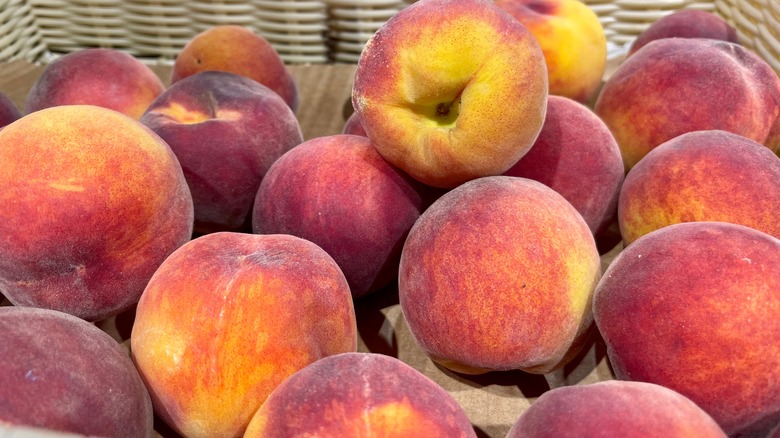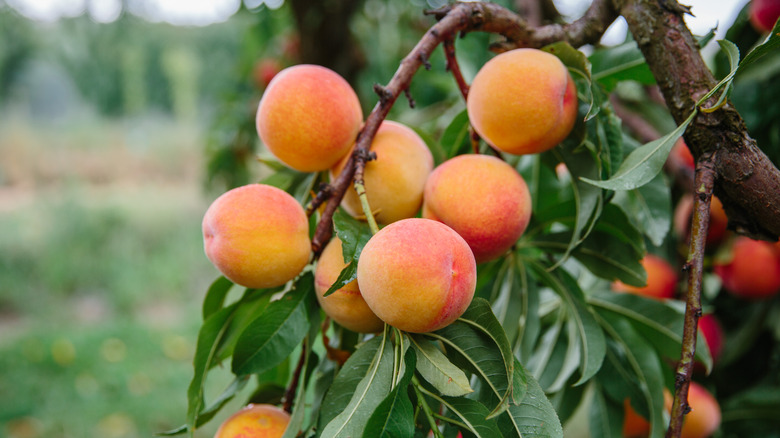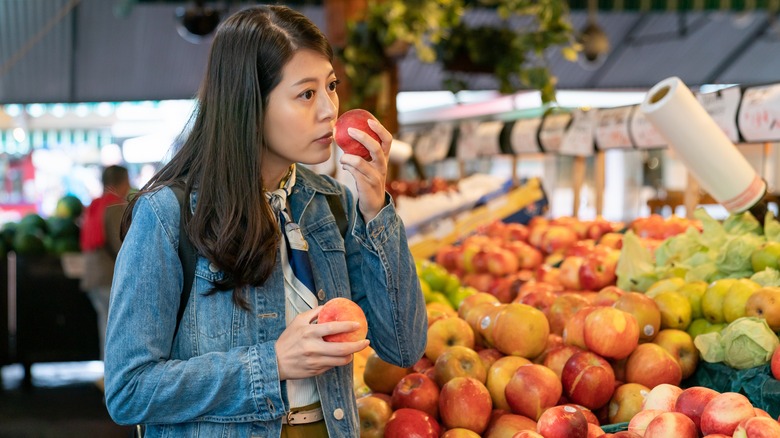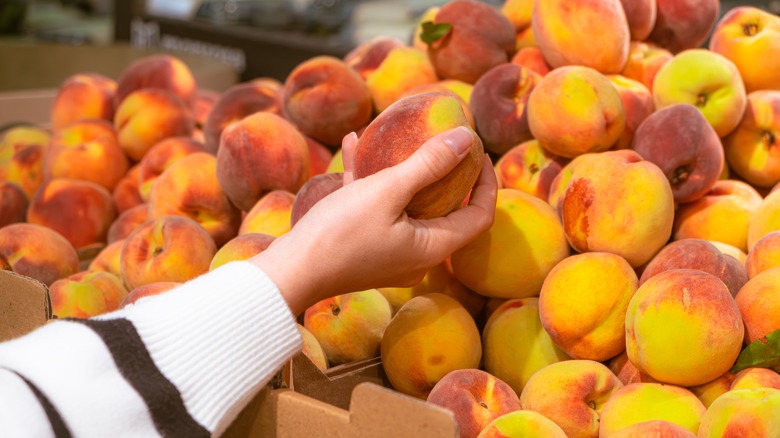What You Need To Know To Choose The Sweetest Peaches At The Store
Sweet peaches are the ultimate summer treat. Whether enjoyed as-is, as the filling for a crumble, cobbler, or crisp, or even as an unexpected food you should be grilling, there are few things that can top a good peach. However, selecting perfectly ripe and sweet peaches at the store can be tricky. Choose too early, and you'll be waiting a while for them to ripen. Too late, and you're left with mealy pieces of fruit.
Selecting the sweetest peaches at the store is an exercise that involves most of the five senses: sight, smell, touch, and, of course, taste. All of these indicators help you identify peaches at their peak, which will ensure optimal sweetness and juiciness, elevating your eating experience and guaranteeing you get the best quality fruit. And don't forget about storage. Storing your store-bought sweet peaches incorrectly can affect their flavor and shelf life. Here's what you need to know to choose the sweetest peaches at the store.
What to look for
Your eyes are a useful tool when picking out the sweetest peaches at the store. Look for peaches with a variety of deep, vibrant colors. Think golden yellows to warm blush pinks to even some deep reds, depending on the variety of peach. This color combination is thanks to the leaves on the tree, which can shade parts of the peach and result in the different colors developing on the skin. Whatever you do, avoid peaches with any green undertones. Green means the fruit is not yet ripe, and it was probably picked from the tree too early.
You can also look for a bit of a wrinkle around the stem. This means the peach is fully ripe and has lost a bit of its moisture, concentrating its sugars even more and contributing to peak sweetness. Of course, you'll also want to steer clear of any peaches that look bruised or blemished.
Give it a smell
Using aroma is another effective way to determine whether the peach you've picked up at the store is sweet and ripe. A ripe peach will emit a pungent, sweet scent that is easily detectable even from a short distance away. To thoroughly assess this, bring the peach close to your nose and take a little whiff. A strong, sweet aroma, which comes from compounds called lactones, is a clear sign that the peach is at its peak ripeness and ready to enjoy.
If the peach has little to no smell at all, it's probably not ripe yet and needs a little more time for the sugars to increase. Peaches that lack any sort of scent were likely picked too early and may not ever develop that desired sweetness, even if left to ripen at home. If a peach has an overly fermented or sour smell, though, it could be overripe and could have a mushy or mealy texture.
Touch, taste, and storage
Touch is also an important tool in your arsenal. A ripe peach will have a little give to it under gentle pressure. This yield means the fruit is juicy and ready to eat. If the peach is rock hard, it's not ripe yet and will likely lack the sweetness you're looking for. On the other end of the spectrum, you want to avoid peaches that are too soft or have any visible bruises, as they may be overripe or damaged.
Although you likely won't have the opportunity to taste a peach at the store before you buy it, this is the key indicator of ripeness. Peaches that are not yet ripe will taste bland and lack the characteristic juiciness of ripe ones. A ripened and sweet peach, on the other hand, will explode with flavor, tasting almost tart.
Once you've chosen the sweetest peaches at the store, you've got to preserve that yumminess at home. The best way to store peaches that you plan to eat within a day or so is to keep them out in the open, stem-side down.



